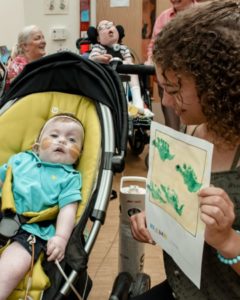A sizeable percentage of ND people might never enter the workforce (estimates are that only 20% of ND individuals are in any form of employment), and thereby lies a massive untapped potential of different experiences. Some progressive employers are putting in place programmes to offer routes into employment for people who might otherwise slip through the net – EY and Microsoft are just two companies that have specific hiring programs for ND individuals.
Biodiversity is undoubtedly a positive for the environment and cultural diversity also has benefits for us all. What about diversity of thought in the workplace? Surely that must be good too?
So why are so many ND people not in employment? Perhaps it’s because we haven’t created an appropriate supportive environment for them. (And by environment we’re not just talking about the physical environment, but the technological environment, the policy sphere and the organisational culture).
How can we be designing for neurodiversity if we don’t know or don’t want to know about and learn from their lived experiences? Often those who actually need the most from the space are not heard, or if heard, often heard too late. That’s maybe our fault as consultants and designers for not wanting to get bogged down in the minutiae too early in a project, but we need to be asking questions upfront about designing for neurodiversity, about responding to the 9 senses (yes, 9). We need to hear from those with real lived experiences of how we can make real differences through design.
As Nigel Oseland said in his 2021 Workplace Trends presentation, “design for the range, not the average.” Alison Cox of 3i echoed this in a talk she also gave last year by saying that designing for neurodiversity would “benefit everybody, disadvantage nobody.”
A real-life example of the importance of designing for neurodiversity was presented last week in a presentation by Gillian Burgiss-Smith during a seminar on ND sponsored by Tsunami Axis. She was quite candid about how her life and her outlook has completely changed following a brain injury. She recounted an episode where she found herself having to navigate her way back into a meeting room from toilets located in the building core and found that the wayfinding and signage hadn’t allowed for that direction of travel, causing her to feel stressed. Something as simple as well-thought-out signage can have a massive impact for Neurodiverse individuals in the workplace.
Listen to people and learn from their lived experiences – and make it easy for them to pass on their knowledge.




